Lesson
News / Blog
Other Menus
Yamato-style Mounting
Yamato-style Mounting
In yamato-style mounting, there is a ranking system known as “shin-gyou-sou,” which basically correlates to formal, semiformal, and informal.
“Shin” type has “shin” (“shin-no-shin”), “gyou” (“shin-no-gyou”), and “sou” (“shin-no-sou”) subtypes.
“Gyou” type has “shin” (“gyou-no-shin”), “gyou” (“gyou-no-gyou”), and “sou” (“gyou-no-sou”) subtypes.
However, “sou” type has only “gyou” (“sou-no-gyou”) and “sou” (“sou-no-sou”) subtypes.
In short, there are effectively eight types in yamato-style mounting.
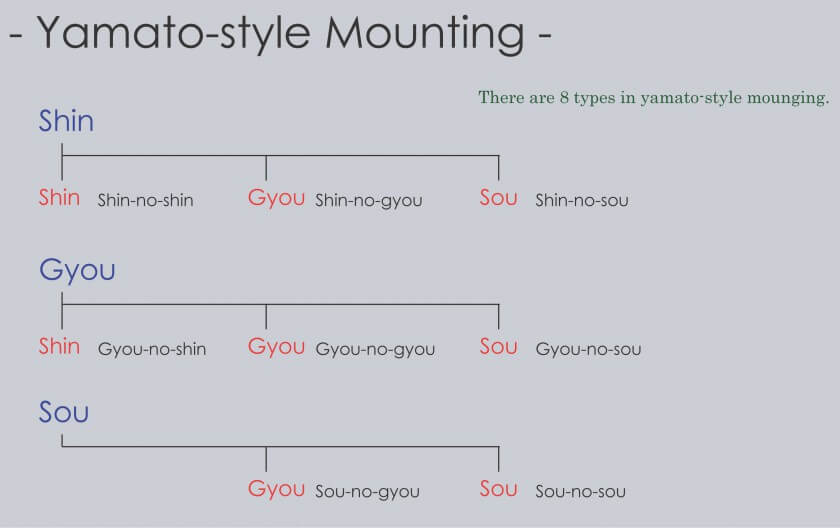
Shin Style Mounting / Buddhist Mounting
“Shin” style mounting is the mounting format used for paintings and calligraphic works related to Buddhist worship, such as Buddhist paintings, portraits of Zen masters, Buddhist invocations, and calligraphic writings. Sometimes this mounting format is also used for other valuable works. In this type of mounting, a “naka-mawashi” (inner cloth enclosure) is characterized by two “suji-mawashi” (thin, line-like cloth enclosures), inserted inside and outside of the naka-mawashi. A “mawashi” means “an enclosure.” Kinds of Shin style mounting are:
(1) The “shin-no-shin” format has “soto-mawashi” (outside enclosure), naka-mawashi, and “ichimonji-mawashi.” “Ichimonji” are two long strips of cloth put on the top and bottom of the main work.
(2) The “shin-no-gyou” format has soto-mawashi, naka-mawashi, and ichimonji, but the main work is not surrounded by ichimonji.
(3) The “shin-no-sou” format has soto-mawashi and naka-mawashi, but doesn’t have ichimonji.
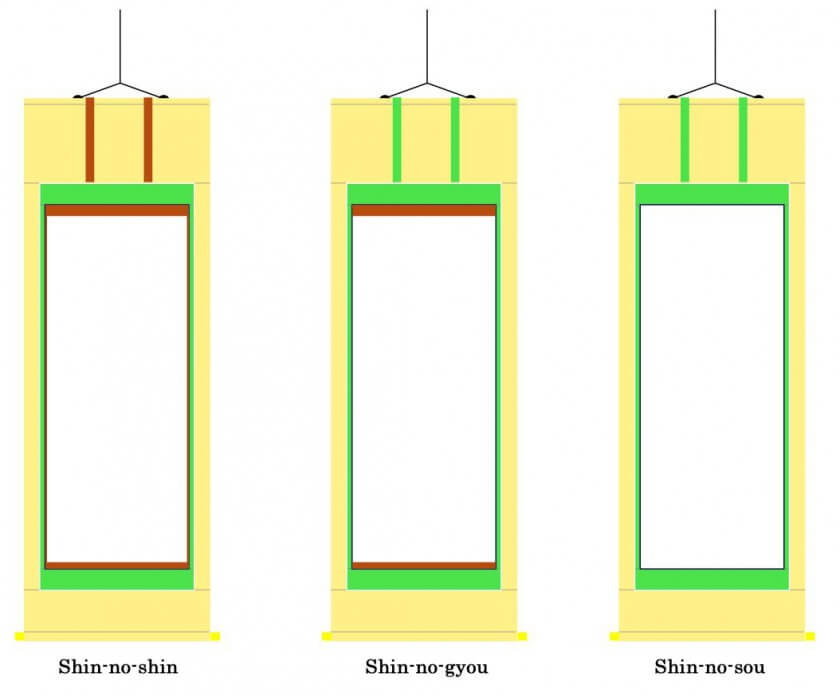
Gyou Style Mounting
“Gyou” style mounting is the mounting format for many Japanese-style paintings (“nihon-ga”), calligraphic works, and so on. Gyou style mounting is the most commonly used in Japan. In this type of mounting, there is no “soto-mawashi” (outside enclosure). The top section is called “ten,” and the bottom section is called “chi.” Kinds of gyou style mounting are:
(1) The “gyou-no-shin” format has an “naka-mawashi” (inner enclosure), and an “ichimonji-mawashi” (ichimonji enclosure). “Ichimonji” are two long strips of cloth attached to the top and bottom of the main work. The sides of naka-mawashi are called “hashira” (pillars) specifically, while the sides of soto-mawashi are called hashira in “shin” style mounting. The “top” and “bottom” are attached above and below the naka-mawashi.
(2) The “gyou-no-gyou” format has both a naka-mawashi and ichimonji, but the main work is not surrounded by ichimonji. The “top” and “bottom” are attached above and below the naka-mawashi. Since this format is divided into “ten-chi” (top and bottom), a naka-mawashi, and ichimonji, it is also called “sandan-hyousou” (a mounting format with three parts). This is the most popular format.
(3) The “gyou-no-sou” format is similar to gyou-no-gyou format, but without the ichimonji. This format is divided into ten-chi and a naka-mawashi; it is also called “nidan-hyousou” (a mounting format with two parts).
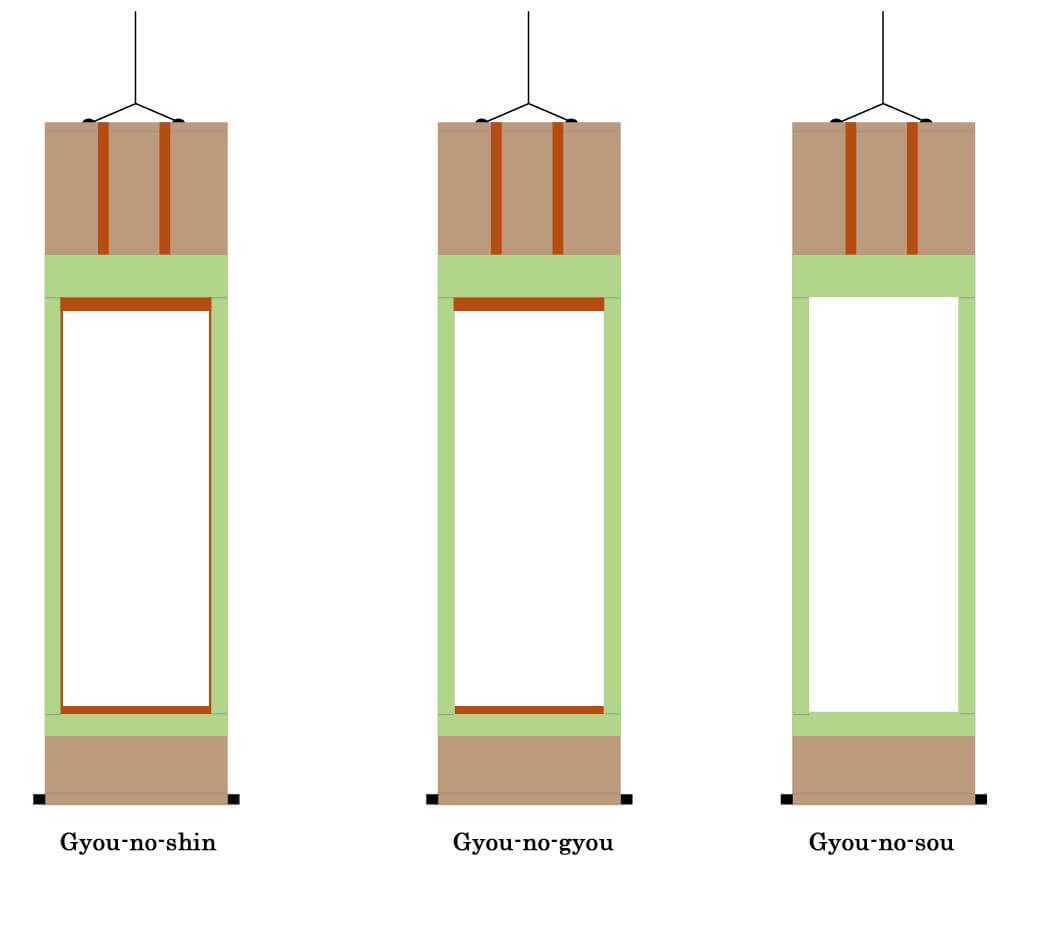
Sou Style Mounting
“Sou” style mounting is the mounting format used for paintings and calligraphic works written by a master of the tea ceremony, or a Zen priest. In this type of mounting, the “hashira” (the sides of the “naka-mawashi” inner enclosure) are narrower than those of the “gyou” type. Since sou style mounting avoids excess decoration, the kind of format in which “ichimonji” (two long strips of cloth put on the top and bottom of the main work) surround the work does not exist. Thus, there are two kinds of sou style mounting. This mounting format is commonly called “rinpo” mounting,” “rinhoe” mounting,” or “chagake” mounting.
(1) The “sou-no-gyou” format has a naka-mawashi and ichimonji, but the main work is not surrounded by ichimonji. The “top” and “bottom” are attached above and below the naka-mawashi.
(2) The “sou-no-sou” format is similar to sou-no-gyou format, but without the ichimonji.
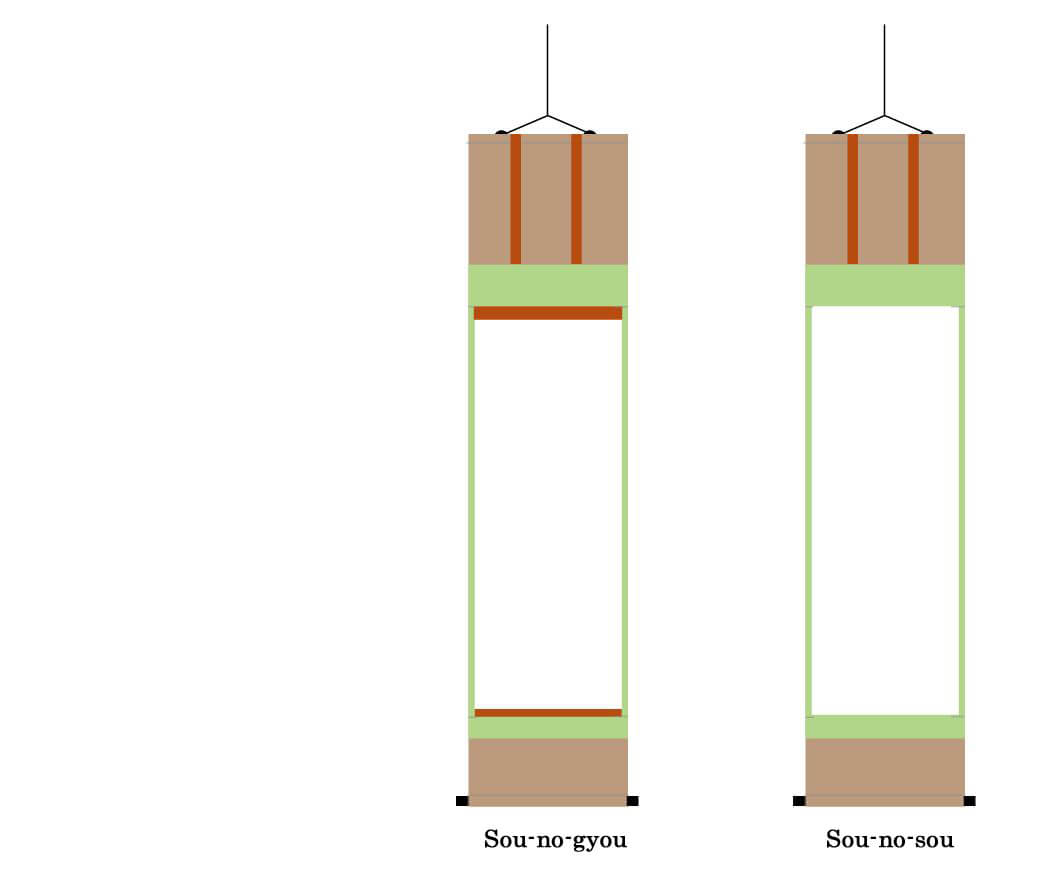
Contents Link
 Previous Knowleadge Previous Knowleadge |
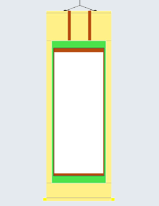 Yamato-style Mounting Yamato-style Mounting |
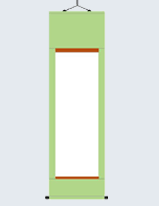 Literati Mounting Literati Mounting |


